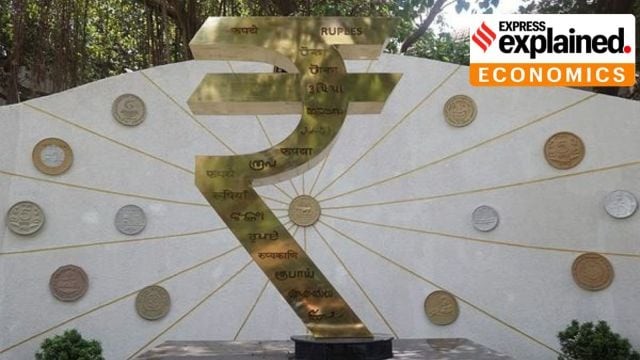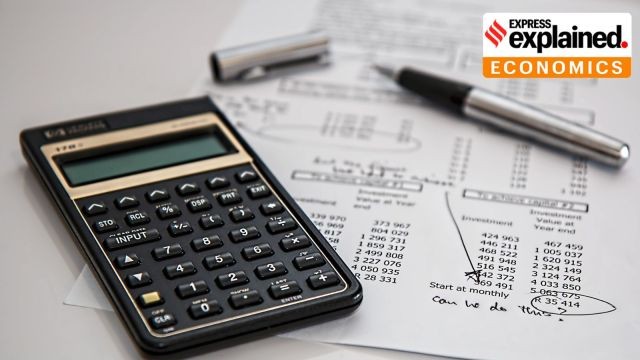



Rupee depreciation refers to the fall in the value of the Indian rupee against other currencies, primarily driven by market forces such as high import demand, capital outflows, and global dollar strength. While it poses challenges like higher import costs, inflation, and increased foreign debt burden, it can also boost exports, attract foreign investment, and increase remittance value. Institutional interventions by the RBI, Government, SEBI, and export agencies aim to manage volatility, maintain investor confidence, and strengthen long-term economic fundamentals, ensuring that currency movements reflect real economic strength rather than short-term pressures.

Copyright infringement not intended
Picture Courtesy: Indian Express
Indian rupee's exchange rate against the US dollar has reached the 89 mark.
Rupee depreciation means the value of the Indian rupee falls relative to another currency, usually the US dollar. In simpler terms: you need more rupees to buy the same amount of foreign currency.
Example:
If $1 = ₹80 earlier → now $1 = ₹90
The rupee has depreciated.
Persistent Current account / Trade deficit: If a country (like India) imports more than it exports over time, it requires more foreign currency (typically US dollars) than it earns. For India, heavy imports — crude oil, raw materials, capital goods, gold, electronics — mean sustained demand for dollars.
Dependence on imported essentials — Because India depends significantly on imported oil, energy, machinery, raw materials, etc., this structural import dependency makes the rupee especially sensitive to global commodity price shocks or supply-side disruptions.
Limited Export Competitiveness / External Demand Constraints: Even if depreciation makes exports cheaper, global demand or structural inefficiencies can limit gains; exports may not rise sufficiently to offset import bills.
Global interest rates and foreign yield differentials: Movements in interest rates abroad (especially in major economies like the US) influence global capital flows. A stronger yield on US dollar assets draws capital away from emerging markets like India, reducing demand for rupees and increasing demand for dollars.
Global risk sentiment and safe-haven flows: In times of global economic stress, geopolitical tension, or uncertainty, investors tend to prefer “safe” currencies/assets (like the US dollar). That leads to capital outflows from riskier/emerging markets weakening their currencies.
Foreign Institutional Investor (FII) Outflows: When foreign investors (in equities, bonds, mutual funds) withdraw funds, they convert their rupees to dollars, increasing demand for dollars and weakening rupee.
Intervention Capability of the Central Bank (Reserve Bank of India — RBI): While the RBI can intervene by selling dollars to support the rupee, such interventions have limits, large-scale interventions may deplete reserves, tighten domestic liquidity, or create side-effects like higher domestic interest rates.
Positive Impact
Domestic import-substitution and industrial capability growth: Costlier imports can make domestic production more competitive. Encourages local manufacturing of electronics, EV components, defense equipment, capital goods, etc. Supports Aatmanirbhar Bharat, incentivises firms to reduce import dependency.
Tourism and medical value travel gains: India becomes a cheaper destination for foreign tourists → boost in hospitality, aviation, retail. India’s medical tourism (surgeries, wellness, Ayurveda) becomes more cost-competitive vs Thailand, Singapore.
Attractiveness for Foreign Direct Investment (FDI): Lower rupee makes Indian assets and production cheaper for global investors. For long-term investors, a weaker rupee reduces entry cost which will lead to increase in FDI inflow improves capital formation. It gives India a comparative edge against other emerging markets vying for investment.
Higher remittance value leads to localised consumption growth: NRI remittances are mostly received by middle- & lower-income families. More rupees per dollar leads to higher spending on housing, education, FMCG, healthcare.
Negative impact:
Inflation and higher cost of living: Imported goods especially essentials like crude oil, fuel, fertilisers, raw materials, electronics become more expensive if paid in dollars. For a country with large import dependence, leads to increase in production cost and consumer prices.
Higher external debt servicing burden & fiscal/financial stress: Entities (businesses or government) that have borrowed in foreign currency face higher repayment burden when rupee falls, since they must convert more rupees to get the same dollars. Increased cost of imports (especially oil & capital goods) means the trade deficit can widen further pressuring the current account balance and possibly putting more strain on foreign exchange reserves.
Impact on macroeconomic stability, inflation & growth: Persistent currency weakness and imported inflation may force the central bank to adjust monetary policy (e.g. raise interest rates), which can hurt growth and investment.
Limited and uncertain benefits for exports under structural constraints: A weaker rupee does not guarantee export growth. If global demand is weak, or export sectors have high import content (raw materials, capital goods), depreciation may increase their cost base reducing competitiveness.
|
Difference between Rupee depreciation and devaluation
|
Reserve Bank of India (RBI): RBI directly manages the supply of dollars in the economy.
Government of India: The government improves the overall economy so that the rupee becomes stronger naturally.
SEBI (Keeping Stock & Bond Markets Stable): SEBI manages foreign investor (FPI) behaviour.
Banks & Export Support Institutions: Bodies like EXIM Bank, ECGC:
International Cooperation and Backup Arrangements: If needed, India can use:
Institutional intervention in rupee depreciation is not about fixing an exchange rate at a particular level, but about maintaining stability, confidence, and resilience in the economy. By managing volatility in the short term and strengthening economic fundamentals in the long term, institutions like the RBI and the Government aim to ensure that the rupee reflects real economic strength rather than temporary market pressures.
Source: Indian Express
|
Practice Question Q. Discuss the economic implications of rupee depreciation for India’s trade balance, inflation, and economic growth prospects. (150 Words) |
Rupee depreciation is the fall in the value of the Indian rupee against other currencies, usually due to market forces such as higher demand for dollars or capital outflows. It is a market-driven phenomenon, unlike devaluation which is policy-driven.








© 2025 iasgyan. All right reserved